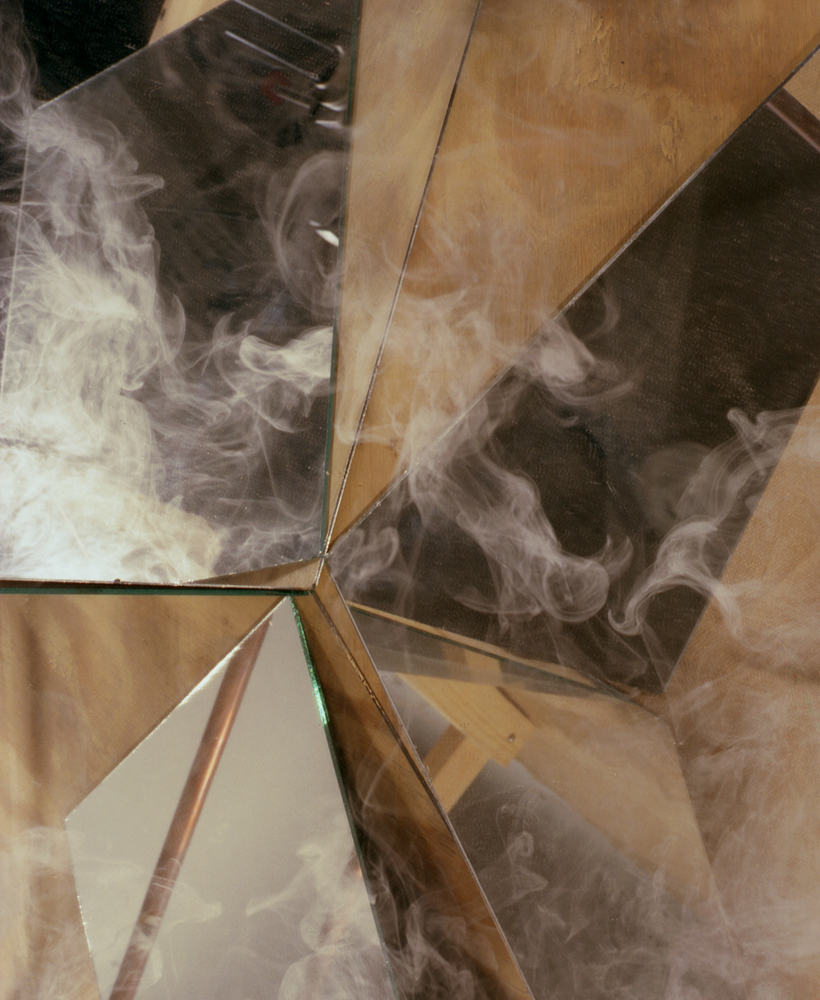In her 1981 essay on early 20th-century European photography, Rosalind Krauss noted “the paradoxical writing of the photograph.” Whether in Dadaist photomontages or Surrealist combination prints, doubled images or double exposures, the spacing and sequencing of images—both within and between frames—carries a syntactical eloquence. These early experiments rupture the unity of the photographic image, breaking its straightforward depiction of realness into strange yet semiotic structures.
Perhaps this visual lexicality can explain the curious resonance of “Images That Speak”, the lead exhibition of this year’s Capture Photography Festival, currently on display at the Satellite Gallery. Co-produced by Capture and Presentation House Gallery, “Images That Speak” showcases 10 contemporary artists who apply photographic processes—from digital compositing to darkroom experiments—to create art that refuses quiet, effortless reception. These works argue, converse, and raise questions, indecipherable at a glance, yet teeming with ideas.
“I wanted to bring together some of the best artists working in photographic media today,” says curator Christopher Eamon. “Artists that are working to totally destroy the image and make it into something else.” For Eamon, whose prolific career has been rooted for the last 20 years in New York—including an assistant curatorship at the Whitney—the lynchpin of the project is London-based artist (and 12 Years a Slave director) Steve McQueen’s 7th November (2001), a single-slide projection accompanied by a gut-wrenching 23-minute narration. It is, essentially, an image that speaks. Projected in a theatre built specially for this exhibition, the installation has all the trappings of cinema: darkness, a big screen, and sonorous sound. All that is missing is movement.
Rather, this cinematic motion is found in the montage of works mounted throughout Satellite Gallery, a flow that runs eloquently at times and is interrupted at others. There is a pictorial rhyme in the brittle greys of Stephen Waddell’s Stain (2012) and Matt Saunders’ Courtyard series—the former captures what appears to be coincidence, an unsettling blotch sprawled across a wall, while the latter are film stills painstakingly painted onto linen and then compressed onto photographic paper; it harkens back to the “cameraless photography” of Surrealist artist Man Ray. Though both ultimately manifest as gelatin silver prints, the processes underpinning these works could not be more diverse. The poetry of these images is halted by Ryan Foerster’s Untitled, which juts from the wall in physical disruption. Foerster’s practice involves exposing light-sensitive paper to the caprice of nature, allowing the elements to sculpt the material into colourful, textured abstractions.
Eileen Quinlan’s kaleidoscopic assemblages harken back to the Bauhaus photography of Florence Henri, while the playful, biomorphic abstractions in Ryan Peter’s “autograms” are produced through analogue methods of contact printing, dodging, and burning. While the Modernist influences of Max Ernst and Joan Miró punctuate Peter’s prints, their gridded layout—resembling the panels of a comic book—adds a distinctly postmodern twist. It goes without saying that montage operates both within space and across time.
This temporality pronounces itself in Arthur Ou’s Untitled (Contact Prints), also laid out with a narrative, animated articulation. These images situate each captured moment in relation to whatever preceded or followed it. “People tend to think of pictures as singular, discrete things,” says Ou, the current director of the BFA Photography program at Parsons the New School for Design in New York. “But it is part of a continual process.” And when working in a medium intrinsically tied to technological advancement, the future is a vital consideration. Berlin-based artist Susanne Kriemann probes the historical circularity of rare earth elements: formerly mined for their phosphors before the proliferation of electric light, the elements are now integrated in screens and smartphones. “Only by having knowledge of what’s been done already—I think this can communicate with us, into the future,” says Kriemann. Her crisp landscape images of mining sites contrast starkly with her clouded attempts at photographing the rare earth minerals, which ironically oppose documentation by the technologies that implicate them. This resistance of candid representation encapsulates the tenor of “Images That Speak”.
“Images That Speak” runs until May 16, 2015 at Satellite Gallery. The Capture Photography Festival runs until April 29, 2015 at various locations.
















